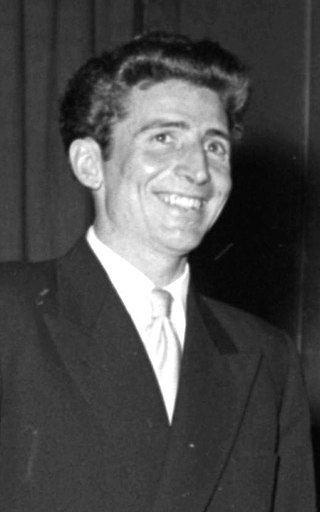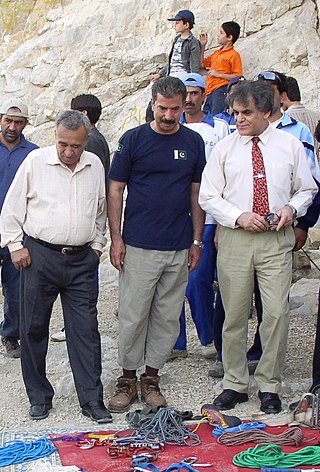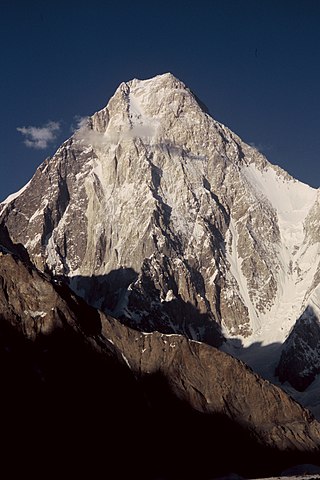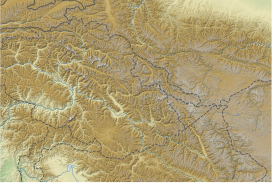
K2, at 8,611 metres (28,251 ft) above sea level, is the second-highest mountain on Earth, after Mount Everest at 8,849 metres (29,032 ft). It lies in the Karakoram range, partially in the Gilgit-Baltistan region of Pakistan-administered Kashmir and partially in the China-administered Trans-Karakoram Tract in the Taxkorgan Tajik Autonomous County of Xinjiang.

The eight-thousanders are the 14 mountains recognized by the International Mountaineering and Climbing Federation (UIAA) as being more than 8,000 metres (26,247 ft) in height above sea level, and sufficiently independent of neighbouring peaks. There is no precise definition of the criteria used to assess independence, and at times, the UIAA has considered whether the list should be expanded to 20 mountain peaks by including the major satellite peaks of eight-thousanders. All of the eight-thousanders are located in the Himalayan and Karakoram mountain ranges in Asia, and their summits lie in the altitude range known as the death zone.

Dhaulagiri, located in Nepal, is the seventh highest mountain in the world at 8,167 metres (26,795 ft) above sea level, and the highest mountain within the borders of a single country. It was first climbed on 13 May 1960 by a Swiss-Austrian-Nepali expedition. Annapurna I is 34 km (21 mi) east of Dhaulagiri. The Kali Gandaki River flows between the two in the Kaligandaki Gorge, said to be the world's deepest. The town of Pokhara is south of the Annapurnas, an important regional center and the gateway for climbers and trekkers visiting both ranges as well as a tourist destination in its own right.

Gasherbrum I, surveyed as K5 and also known as Hidden Peak, is the 11th highest mountain in the world at 8,080 metres (26,510 ft) above sea level. It is located between Shigar District in the Gilgit–Baltistan region of Pakistan and Tashkurgan in the Xinjiang of China. Gasherbrum I is part of the Gasherbrum Massif, located in the Karakoram region of the Himalaya. Gasherbrum is often claimed to mean "Shining Wall", presumably a reference to the highly visible face of the neighboring peak Gasherbrum IV; but in fact, it comes from "rgasha" (beautiful) + "brum" (mountain) in Balti, hence it actually means "beautiful mountain."

Broad Peak is one of the eight-thousanders, and is located in the Karakoram range spanning Gilgit-Baltistan, Pakistan and Xinjiang, China. It is the 12th highest mountain in the world with 8,051 metres (26,414 ft) elevation above sea level. The first ascent of this mountain was in June 1957, accomplished by Fritz Wintersteller, Marcus Schmuck, Kurt Diemberger, and Hermann Buhl as part of an Austrian expedition.

Hermann Buhl was an Austrian mountaineer. His accomplishments include the first ascents of Nanga Parbat in 1953 and Broad Peak in 1957.

Gasherbrum II ; surveyed as K4, is the 13th highest mountain in the world at 8,035 metres (26,362 ft) above sea level. It is the third-highest peak of the Gasherbrum massif, and is located in the Karakoram, on the border between Gilgit–Baltistan, Pakistan and Xinjiang, China. The mountain was first climbed on July 7, 1956, by an Austrian expedition which included Fritz Moravec, Josef Larch, and Hans Willenpart.

Chogolisa is a trapezoidal mountain located in the Karakoram range within the Gilgit-Baltistan region of Pakistan. It is situated near the Baltoro Glacier in the Concordia region, which is renowned for hosting some of the world's tallest peaks.

Krzysztof Jerzy Wielicki is a Polish mountaineer, regarded as one of the greatest Polish climbers in history. He is the 5th man to climb all fourteen eight-thousanders and the first ever to climb Mount Everest, Kangchenjunga, and Lhotse in winter. He is a member of The Explorers Club.

Nazir Sabir is a Pakistani mountaineer. He was born in Hunza. He has climbed Mount Everest and four of the five 8000 m peaks in Pakistan, including the world's second highest mountain K2 in 1981, Gasherbrum II 8035m, Broad Peak 8050m in 1982, and Gasherbrum I 8068m in 1992. He became the first from Pakistan to have climbed Everest on 17 May 2000 as a team member on the Mountain Madness Everest Expedition led by Christine Boskoff from the United States that also included famed Everest climber Peter Habeler of Austria and eight Canadians.

Gasherbrum IV, surveyed as K3, is the 17th highest mountain on Earth and the 6th highest in Pakistan, as well as the highest independent mountain under eight thousand meters in Pakistan.
Alan Paul Rouse was the first British climber to reach the summit of the second highest mountain in the world, K2, but died on the descent.
Wojciech Kurtyka is a Polish mountaineer and rock climber, one of the pioneers of the alpine style of climbing the biggest walls in the Greater Ranges. He lived in Wrocław up to 1974 when he moved to Kraków. He graduated as engineer in electronics. In 1985 he climbed the "Shining Wall," the west face of Gasherbrum IV, which Climbing magazine declared to be the greatest achievement of mountaineering in the twentieth century. In 2016, he received the Piolet d'Or for lifetime achievement in mountaineering.

Simone Moro is an Italian mountaineer known for having made first winter ascents of four of the fourteen eight-thousanders: Shishapangma in 2005, Makalu in 2009, Gasherbrum II in 2011, and Nanga Parbat in 2016. No other climber has made more first winter ascents of an eight-thousander in history. He has summited Everest four times, in 2000, 2002, 2006, and 2010.
Karl Maria Herrligkoffer was a German medical doctor, who from 1953 and 1986, organized and directed numerous German and Austrian mountaineering expeditions including 13 expeditions to five of the world's highest peaks in the Himalayas and the Karakoram. There were some notable successes on these expeditions including the first ascent of Nanga Parbat (8126m), and also the second and third ascent of that mountain, the successful ascent of Everest (8849m) by 15 people from one expedition, the first ascent of the South Ridge of K2 (8611m), the first attempt on Broad Peak (8051m), and the first ascent of about 35 peaks during two expeditions to east Greenland.
















